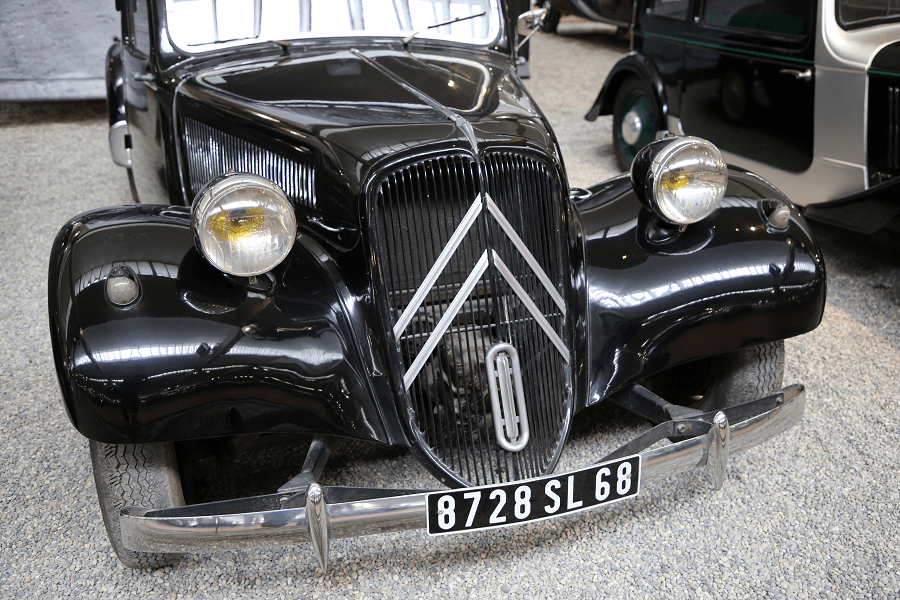Black Citroën Berline Type 11B from 1953, four cylinders, 1911 cc, 56 HP, 115 km/h
The Citroën Traction Avant is the world’s first unibody front-wheel-drive car. A range of mostly 4-door saloons and executive cars, were made with four or six-cylinder engines, produced by the French manufacturer Citroën from 1934 to 1957. Approximately 760,000 units were produced.
Whilst front-wheel drive and four-wheel independent suspension had been established in the mass market by Auto Union and subsequently others some years before, the Traction Avant pioneered integrating these into a mass-production, crash resistant, unitary, monocoque body. Additionally, the car was also an early adopter of rack and pinion steering.
The original model was a small saloon with a 2,910 mm (115 in) wheelbase, and a 1,303 cc (79.5 cu in) engine: this model was called the 7A. All the models have front suicide doors with rear conventional doors. After just 2 months, with about 7,000 cars produced, the 7A was succeeded in June 1934 by the 7B which used a higher-power engine of 1,529 cc (93.3 cu in) and provided two windscreen wipers in place of the single wiper on the original production cars.
Later models were the 11CV (launched in November 1934), which had a 1,911 cc (116.6 cu in) four-cylinder engine, and the 15/6 (launched June 1938), with a 2,867 cc (175.0 cu in) six. The 11 was an 11 CV, but curiously the 15/6 was in the 16 CV tax band. The 11 was built in two versions, the 11BL (“légère”, or “light”), which was the same size as the 7 CV, and the 11B (“Normale”, or “normal”), which had a longer wheelbase and wider track.












